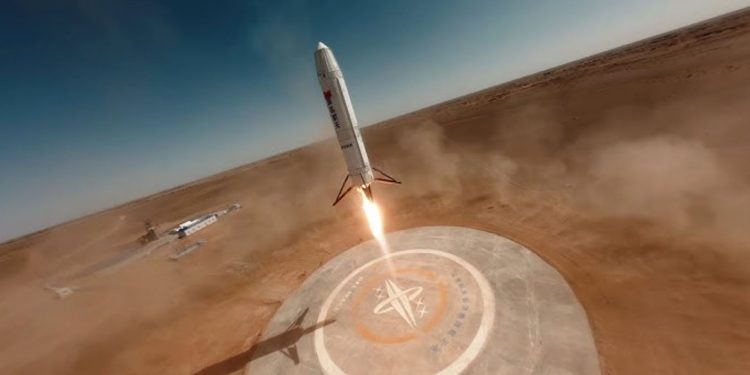China’s ambitious space sector took another bold step forward, but not without drama, as startup Deep Blue Aerospace nearly pulled off a flawless high-altitude test of its Nebula-1 reusable rocket. On September 22, the company launched the kerosene-fueled rocket from Ejin Banner Spaceport in Inner Mongolia. While the rocket climbed to around 5 kilometers (3.1 miles), an unexpected issue during its descent led to a fiery finale that was captured in stunning 360-degree drone footage.
Pushing the Boundaries of Chinese Rocket Technology
Deep Blue Aerospace, one of the pioneering private space companies in China, is part of a broader movement to make reusable rockets more accessible and economical. The Nebula-1 rocket, towering at nearly 21 meters (69 feet), is a breakthrough design fueled by kerosene-liquid oxygen—the same propellant mixture used by SpaceX’s Falcon 9. Deep Blue hopes to achieve a reusable rocket capable of matching the high standards set by its Western competitors.
What makes the Nebula-1 unique is its use of advanced 3D-printed engines, specifically its Thunder-R models. These engines are built from high-temperature alloys to withstand the rigors of repeated launches and recoveries. Deep Blue emphasizes that despite the challenges, kerosene-liquid oxygen remains the most efficient and cost-effective option for commercial space missions. However, stability and regulation issues with this fuel type continue to pose hurdles during the rocket’s descent phase.
A Close Call: The Test’s Dramatic Ending
The test began smoothly, with all three Thunder-R engines igniting as planned and propelling Nebula-1 to its peak altitude. At this point, the two side engines shut down, leaving the central engine to control the rocket’s descent. As the rocket neared the ground, it deployed its landing legs, and initial reports indicated that the descent was nearly perfect. Deep Blue even noted that the landing had a margin of error of less than half a meter.
But just as Nebula-1 was preparing for a soft landing on its recovery platform in the Gobi Desert, an anomaly occurred. A sudden explosion around the engine section caused the rocket to tip over, leading to a partial breakup of its structure. The top portion of the rocket broke away from the main body, bringing the test to a fiery and abrupt end.
A Major Step Forward Despite the Setback
While the test didn’t go as planned, Deep Blue remains optimistic. This was one of the most advanced tests of reusable rocket technology ever conducted by a Chinese company, and the progress made is undeniable. The successful ignition of the engines, the stability of the ascent, and the near-perfect descent all point to significant advances in the field.
Deep Blue Aerospace is not the only company pushing the boundaries of China’s private space sector. Competitors like iSpace, Galactic Energy, and Space Pioneer are also developing reusable rockets. This race is crucial for China’s space ambitions, both in the commercial and military sectors. As China ramps up its demand for satellite launches and other space services, these companies aim to offer a domestic alternative to SpaceX’s Falcon 9.
Looking Ahead: What’s Next for Deep Blue Aerospace?
Despite the fiery setback, Deep Blue Aerospace is already looking to the future. The company has announced plans for another Nebula-1 test flight in November, with hopes of achieving full orbital recovery by the end of the year. This accelerated timeline reflects the intense competition within China’s private space industry, where companies are striving to secure their place in the global space race.
As reusable rocket technology becomes more refined, it has the potential to drastically reduce the cost of access to space, making satellite launches and other missions more affordable. For China, this would mean greater autonomy and capability in its space endeavors, further solidifying its status as a global space power.











